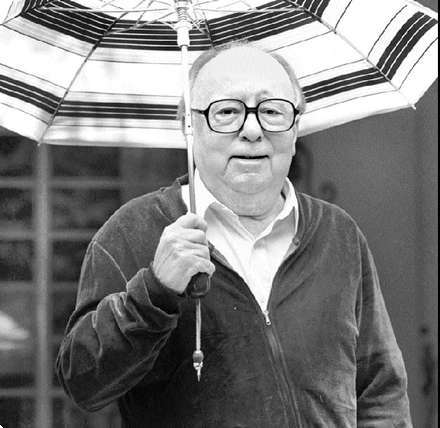December 11, 2009
What Bolaño Read: Augusto Monterroso
by Melville House
This is the seventh installment in the two-week series “What Bolaño Read” by former Shaman Drum Bookstore manager Tom McCartan. The seriescelebrates the publication of Roberto Bolaño: The Last Interview & Other Conversations, which is just out from Melville House. Click here to read all posts in the series.

"Once there was a Flash of Lightning that struck in the same place twice. But it found that it had done enough damage the first time round and was no longer necessary, and it got very depressed."
In an essay in Entre paréntesis that appeared in English translation in World Literature Today in 2006, titled “Advice on the Art of Writing Short Stories,” Roberto Bolaño outlines a twelve point plan on how to be a “successful short story writer.” Written in true Bolaño style, the list includes advice on everything from how to avoid melancholy to which authors one should dress like. Bolaño even includes points designed to give the reader time to consider the previous point, like number ten: “Give thought to point number nine. Think and reflect on it. You still have time. Think about number nine. To the extent possible, do so on bended knees.”
In point four Bolaño makes reference to the Guatemalan short story writer Augusto Monterroso (1921-2003) saying succinctly: “One must read Juan Rulfo and Augusto Monterroso.”
Monterroso is perhaps most famous for his short story “The Dinosaur,” which is said to be literature’s shortest story. It reads in full:
When he woke up, the dinosaur was still there.
In an 1996 interview with Ilan Stavans for the Massachusetts Review, Monterroso recalled some early reviews of “The Dinosaur”: “I still have the very first reviews of the book: critics hated it. Since that point on I began hearing complaints to the effect that it isn’t a short-story. My answer is: true, it isn’t a short story, it’s actually a novel.”
Brevity was, to say the least, an important concept for Monterroso. His essay “Fecundity” is included in The Oxford Book of Latin American Essays. It reads in full:
Today I feel well, like a Balzac; I am finishing this line.
Not all of Monterroso’s work is so short. His Complete Works and Other Stories, translated into English by Edith Grossman and published by the University of Texas Press, is full of works of varying length. All tend to have the simplicity of folktales. In the Massachusetts Review interview Monterroso defends his style, saying “Traditional stories are useful in that they broaden our scope by showing us what people enjoy most: simplicity.”
Bolaño was drawn, in particular, to Monterroso’s ideas about literature in exile. Monterroso lived in Guatemala, Honduras, Bolivia, Mexico, and Chile–often under political duress. Exile was very personal for Bolaño and he relates, in his essay “Exiles” from Entre paréntesis, a story told to him by Enrique Vila-Matas about Vila-Matas attending a conference that included a panel discussion on exile. Monterroso was on the panel and, unlike the other panelists who considered exile “something atrocious” and “awful,” Monterroso said he found it “cheerful, happy.” This spoke to Bolaño who goes on to say “I wasn’t at the conference and Vila-Matas didn’t push the issue, but I can say without a doubt that I agree with Monterroso’s version.”